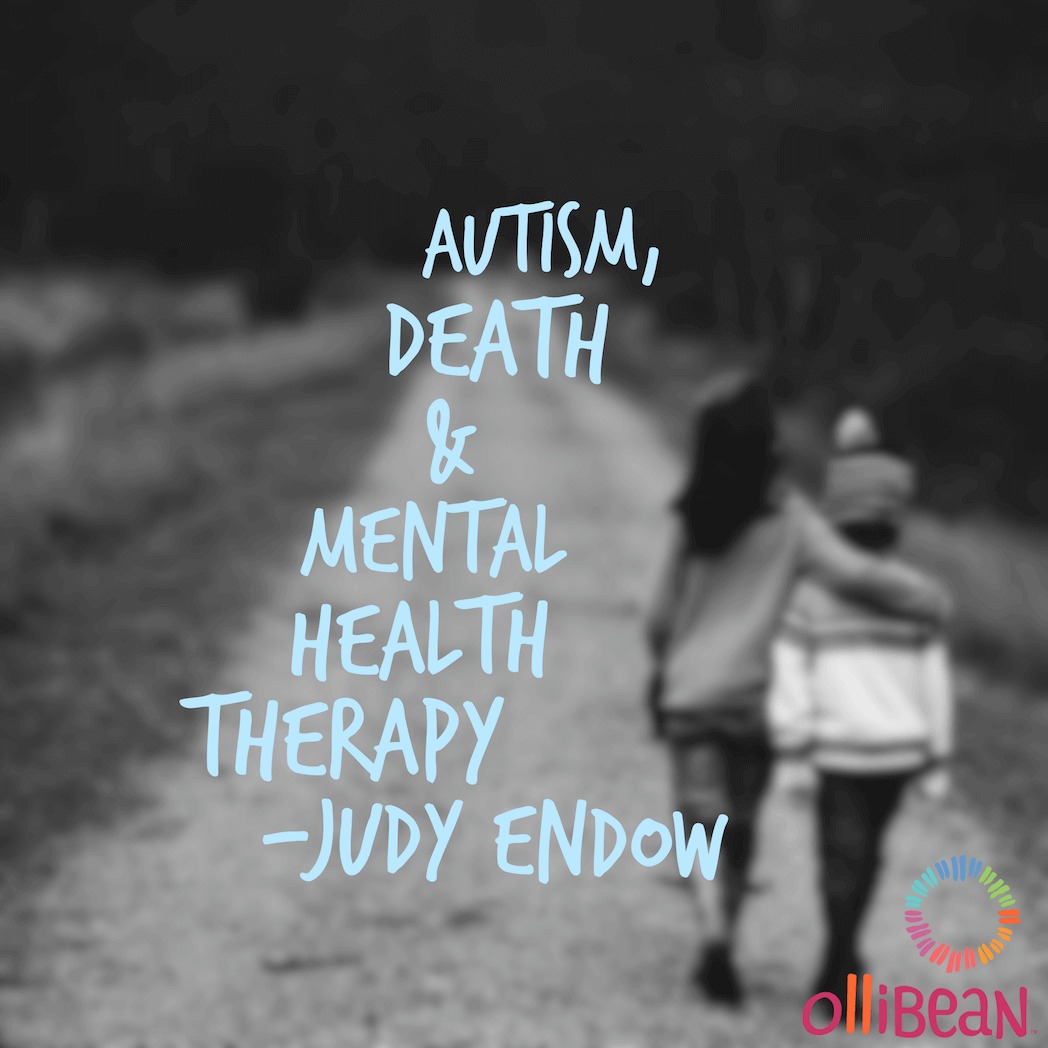by Judy Endow
The traumatic event of death is something we all struggle with from time to time over the course of our life. It is no different for autistic people. I am often reminded to be sure to identify exactly what the autistic person is struggling with when it comes to their particular circumstances.
I am remembering youngster who had a pet gerbil that died and he didn’t want to part with the beloved gerbil. Three days after the gerbil had passed the pet was still in the little plastic exercise ball, which the youngster was carrying around with him.
I was asked to help this child process his grief so the pet could be buried and the child could move on. I reviewed the grief process and in particular how it pertains to growth and development, but then discovered that wasn’t at all what I needed for this particular child. Since that long ago time I have learned it is important to first understand the autistic person’s perspective. Both the autistic thinking style and the often-unknown hidden curriculum of society will significantly impact how the problem is defined and what will impact a positive outcome.
Autistic Thinking Style
An autistic person is often very literal and concrete in their thinking. In addition, many of us are visual thinkers. As children we often do not have a way to hold an idea or remember something without actually having that concrete item or to continue to talk about that thing so as to keep the picture of it in our mind. For example, if we have been told that we will go to the library after lunch, we might keep asking, “When will we go to the library?” Often, the function of this kind of question is not to learn the answer, but instead, serves as a way to hang onto that picture of the library in our head.
I am learning that with traumatic events it is important to assess and match the autistic style of thinking (literal, concrete and think-in-pictures) of the particular person with the said traumatic event – in this case the death of a beloved pet. When drawing out the scene where the youngster discovered the gerbil ball was no longer rolling across the floor and his mom told him the gerbil had died, I was able to discover his thoughts.
He thought that as long as he could see his gerbil the gerbil was not in fact dead. This youngster did not have a way to hold the picture of his gerbil in his mind without actually seeing the gerbil – hence his need to carry around the now deceased critter. Furthermore, his reasoning informed him that everything he could see was real and that real things could not be dead. (Believe me – this sort of reasoning can make sense to a literal, concrete, think-in-pictures mind, even though it turns out to not be true at all!)
This youngster’s mom brought in pictures the family had taken when he received the gerbil as a birthday present. The youngster also drew a few pictures of his pet. He was able to use the photos and pictures in place of the actual deceased pet. We practiced various scenarios where he put the hamster ball under a pillow and on the other side of the door so he could not see it and instead looked at the photo. It worked. He could remember his pet by looking at the photos and drawings instead of looking at the gerbil.
Hidden Curriculum
Even after this, he was still reluctant to bury the gerbil. I discovered he was missing the practical information about what happens when a living thing dies. Most people automatically pick up this sort of information. It is assumed knowledge. Furthermore, because most people know this information, it is expected that everybody knows it. People with autism neurology do not automatically pick up all hidden curriculum in the world around them. Often, they need some direct teaching.
In this case the direct teaching was an explanation drawn out on paper. This explanation has been used with others over time so I will make it a general explanation so as to enable it to be useful to any reader who might find it helpful. It is written for mature understanding. It can be adjusted for less mature understanding. In addition, various religious or faith-based wording may be substituted.
A body is a concrete entity. The life force is what makes us be individual people (or our pets to be their individual selves). Without the life force of the essence or spirit, it is impossible for the body to live.
Once a body has no life force it will begin to go bad – like food. This happens with all living things. For example, garden or plant food rots once it is disconnected from its life source – the ground, water, sunshine. In addition, animal food rots once it is disconnected from its life source – the live animal.
Pets and human beings are part of the animal kingdom. Their bodies cannot remain stable, but instead physically break down over time once the life force is no longer present. That is why we don’t save the body of a pet or someone who dies. It will only decay. The body is no longer useful. So, we bury or cremate it. That way we have a place to go to look at something (grave site or cremation urn) to remind us of the loved one who is no longer alive.
We often remember the good things and great times we had by looking at photos and recalling fond memories.
To recap, I have learned over the years that utilizing autistic style of thinking and searching for areas of unknown hidden curriculum are deal breakers. In fact, without this first step, all sorts of well meaning, state-of-the-art counseling techniques and therapy modalities we rely on, while they generally work for most of the population, often do not produce the intended positive outcome for our autistic clients.
BOOKS AND DVD BY JUDY ENDOW
Endow, J. (2012). Learning the Hidden Curriculum: The Odyssey of One Autistic Adult. Shawnee Mission, KS: AAPC Publishing.
Endow, J. (2006). Making Lemonade: Hints for Autism’s Helpers. Cambridge, WI: CBR Press.
Endow, J. (2013). Painted Words: Aspects of Autism Translated. Cambridge, WI: CBR Press.
Endow, J. (2009). Paper Words: Discovering and Living With My Autism. Shawnee Mission, KS: AAPC Publishing.
Endow, J. (2009). The Power of Words: How we think about people with autism spectrum disorders matters! Shawnee Mission, KS: AAPC Publishing.
Endow, J. (2009). Outsmarting Explosive Behavior: A Visual System of Support and Intervention for Individuals With Autism Spectrum Disorders. Shawnee Mission, KS: AAPC Publishing.
Endow, J. (2010). Practical Solutions for Stabilizing Students With Classic Autism to Be Ready to Learn: Getting to Go. Shawnee Mission, KS: AAPC Publishing.








This is wonderful how you use your own experiences as an autistic person to help others with trauma and other issues. I loved how you were able to figure out just what the child needed and give him these experiences and information.
Hi,
I publish an Australian website on disability news and opinion at:
https://mydisabilitymatters.com.au
and was wondering if it might be okay to republish this article and any other relevant ones on our website, with appropriate credit and a link back of course.
It would help spread your work and gain a wider audience for you.
Hope we can work together and I am quite happy to publish other articles you may have written that aren’t on your blog also.
Thanks,
Dale.